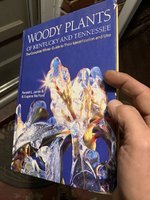Dkdhej
Sapling
Scots pine along with who knows how many other species of pines.How many needles per?
Scots is 2.
I think the needles look too long to be a Scots pine.
Scots pine along with who knows how many other species of pines.How many needles per?
Scots is 2.
Virginia Pine is not likely in your location where it does not grow naturally. I too think it to be Jack Pine Pinus Banksiana.Haha! “Poverty Pine” isn’t even the “GO-TO” common name for it. I typed it for “charisma’s” sake!The MOST common “common name” is Virginia Pine. I had INTENDED to type, “...(Pinus Virginiana).” DIRECTLY after “Poverty Pine”
But I see, NOW that I did not.
Whoopsies!

Thank you much... upon further examination into it, needle length and “twisted” characteristics mentioned by “OL”.. I believe this to be accurate.Virginia Pine is not likely in your location where it does not grow naturally. I too think it to be Jack Pine Pinus Banksiana.
It (first post) looks greatly like MY hop-hornbeam... an Ostrya.. but I don’t run across many.. so I DEFINITELY can not be certain.
First thought is a blueberry -Vaccinium sp.Any idea what this is? I found this in the woods behind my house today. Pretty much everything else has lost their leaves.
Awesome, would look close at buds to try to further confirm or nail down species; although, blueberry buds can be highly variable from species to species.Thanks @TN_Jim. I looked at some pictures online of the bark and growth habit and I think you’re right.





